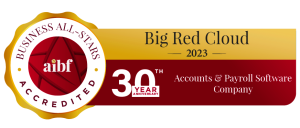Best selling author, Bernard Marr, penned a post over on LinkedIn about Google’s interviewing policies and he threw up 10 interview examples from around the United States and the questions do appear to be somewhat ridiculous until you place them in context.
Interview questions for many years followed a tried and tested formula – stock question with an expected competent stock answer. Those that prepared best usually made the final shortlist and left themselves with the most favourable of chances. The entire interview process was/is an extension of the educational system – study and repeat/regurgitate to the best of your ability in a limited amount of time. Exams at circa three hours and interviews circa 45 minutes. You know the drill.
Along come the HR folk at software giant Google and they look at the hiring process in an entirely different way. For them, a round peg in a round hole was the person being right for the company and not just the job. They looked beyond the responsibilities of the position being advertised and placed a premium on those individuals that would grow with the company and add much greater value across a series of roles and divisions within the company. Quite logical when you step back and look at it.
In online marketing, CAC (cost of customer acquisition) and CRC (cost of customer retention) are important benchmarks and if we apply them to hiring then it’s a no brainer: we set the hiring policies as if we were hiring our most suitable customer, someone that will be loyal over time, stay with us and add value over the life time of their relationship with us. That’s what Google is going with its hiring policies.
Here is Bernard’s ‘crazy’ list of 10 interview questions. As a bit of fun, take them and apply them to your locale/ town / city and throw them out to your team and see what answers you get back.
- Bring an item with you to the interview that best represents your personality.
This could be a very interesting and revealing question for an interviewer, and a frustrating one for the interviewee! What to bring that represents your personality and paints you in a favorable light? - You just got back from a 2 week vacation and have 300 emails to process in the next hour. Go.
This is called an in-tray, or sometimes an e-tray exercise, in which you are given sample work tasks to perform and asked to do them in a set time period. They’re usually a high volume of tasks to complete in a short period of time, and in some simulations, you may be given a new project to work on half-way through or receive a phone call that you have to deal with. - Move these three chairs from one end of the room to the other.
Seems like a simple enough task. But it may be designed to see if you try to tackle a task quickly or methodically, or how you think through a problem. - Name as many uses as you can for a lemon.
Questions like this were asked as part of an admissions test for flight school for commercial airline pilots, because pilots need to be able to think quickly and creatively in an emergency situation. - How many people flew out of Chicago last year?
According to Glassdoor.com, this was a question asked at Redbox, the video rental kiosks. The point of these questions is not to get the correct answer, but to show how you can use estimations and creative thinking to arrive at an answer. The simplest answer of all? Zero. People don’t fly; airplanes do. - How would you unload a 747 full of jellybeans?
This was reportedly a question asked at Bose, the audio company (which has little to do with jellybeans or aircraft). In this case, the correct answer almost certainly starts with, “It depends…” Many people might assume that the jellybeans are loose, but what if they are in containers? Do they need to be able to be eaten later or can you let them spill out on the tarmac? How did they get in there in the first place? These kinds of probing questions (whether the interviewer has an answer for them or not) helps show how you analyze a problem. - Describe the color yellow to a blind person.
This question is almost certainly directed at showing your communications skills. - What is your favorite song? Perform it for us now.
This question reportedly comes from Living Social, a Groupon-like site that sells local deals, and clearly has a very particular company culture. This might be about seeing how your personality will fit in with the culture, how you feel about wacky requests, how you handle embarrassment, and so on. - If you were a pizza delivery man, how would you benefit from scissors?
Another infamous question supposedly asked by Apple. Similar to the “how many uses” type question, this question is designed to show your skills at creative problem solving and thinking on your feet. - Design an evacuation plan for San Francisco.
I’ll close with another epic question from Google. It has to be said that Google’s questions are almost certainly designed to be so mind-bogglingly difficult to tackle (at least, in the span of a job interview) that one thing the interviewer is probably looking for is how quickly you give up — or not. One site suggested simply answering, “I don’t know,” because companies might be looking for someone who can admit he doesn’t have all the answers. If that’s the route you take, I’d suggest following up with, “But here’s how I’d start figuring it out.”
Don’t forget though, that as an employer you must have your house in order in relation to HR guidelines and it’s an area often overlooked by many small businesses. Check out our HR guide, it’s one of our most widely read and it outlines exactly what your responsibilities are and also provides a handy checklist so that you can keep on top of them.




